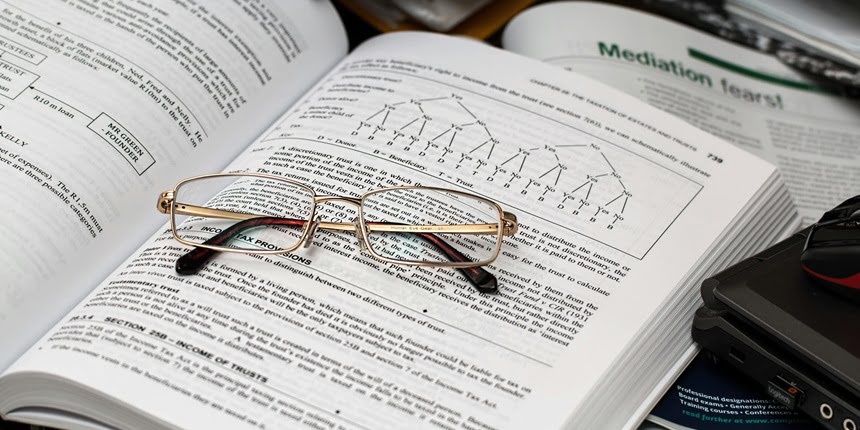GATE 2025 syllabus for ECE has eight sections; list of topics
Vagisha Kaushik | October 5, 2024 | 05:09 PM IST | 4 mins read
GATE 2025 registration last date with a late fee is October 7. Aspirants can apply on gate2025.iitr.ac.in.
GATE Previous Year Question Paper's
Download GATE previous year question papers to understand exam pattern and difficulty level. Practice with these papers to boost your preparation and improve your score.
Check Now
NEW DELHI: The Indian Institute of Technology (IIT) Roorkee will conclude the registration process for the Graduate Aptitude Test in Engineering (GATE) 2025 on October 7 with a late fee. Eligible aspirants who have not applied yet can fill GATE form 2025 on the official website, gate2025.iitr.ac.in.
GATE 2026: Preparation Tips | GATE PYQ's | Last 3 Month's Preparation
GATE 2026 Preparation: Chemical Engineering | CSE | Mechanical Engineering
Online MBA: Guide | Top Online MBA Universities India | Online MBA at IIMs
GATE 2025 registration fee during the extended period is Rs 1,400 for female, Scheduled Caste (SC), Scheduled Tribe (ST), and Persons with Disabilities (PwD) candidates. All other applicants will be required to pay Rs 2,300.
GATE 2025 exam will be conducted on February 1, 2, 15, and 16 in two shifts. The test will be held for 30 test papers.
According to the GATE syllabus 2025 for electronics and communication engineering, the paper comprises eight sections. If you’ve applied for or are wishing to apply for the ECE paper, here’s the syllabus in detail.
GATE Syllabus 2025 for ECE
The section-wise topics in GATE ECE syllabus 2025 are as follows:
Section 1: Engineering Mathematics
Linear Algebra: Vector space, basis, linear dependence and independence, matrix algebra, eigenvalues and eigenvectors, rank, solution of linear equations - existence and uniqueness.
Calculus: Mean value theorems, theorems of integral calculus, evaluation of definite and improper integrals, partial derivatives, maxima and minima, multiple integrals, line, surface and volume integrals, Taylor series.
Differential Equations: First order equations (linear and nonlinear), higher order linear differential equations, Cauchy's and Euler's equations, methods of solution using variation of parameters, complementary function and particular integral, partial differential equations, variable separable method, initial and boundary value problems.
Vector Analysis: Vectors in plane and space, vector operations, gradient, divergence and curl, Gauss's, Green's and Stokes’ theorems.
Complex Analysis: Analytic functions, Cauchy’s integral theorem, Cauchy’s integral formula, sequences, series, convergence tests, Taylor and Laurent series, residue theorem.
Probability and Statistics: Mean, median, mode, standard deviation, combinatorial probability, probability distributions, binomial distribution, Poisson distribution, exponential distribution, normal distribution, joint and conditional probability.
Section 2: Networks, Signals and Systems
Circuit Analysis: Node and mesh analysis, superposition, Thevenin's theorem, Norton’s theorem, reciprocity. Sinusoidal steady state analysis: phasors, complex power, maximum power transfer. Time and frequency domain analysis of linear circuits: RL, RC and RLC circuits, solution of network equations using Laplace transform.
Linear 2-port network parameters, wye-delta transformation.
Continuous-time Signals: Fourier series and Fourier transform, sampling theorem and applications.
Discrete-time Signals: DTFT, DFT, z-transform, discrete-time processing of continuous-time signals. LTI systems: definition and properties, causality, stability, impulse response, convolution, poles and zeroes, frequency response, group delay, phase delay.
Section 3: Electronic Devices
Energy bands in intrinsic and extrinsic semiconductors, equilibrium carrier concentration, direct and indirect band-gap semiconductors.
Carrier Transport: Diffusion current, drift current, mobility and resistivity, generation and recombination of carriers, Poisson and continuity equations.
P-N junction, Zener diode, BJT, MOS capacitor, MOSFET, LED, photo diode and solar cell.
Section 4: Analog Circuits
Diode Circuits: Clipping, clamping and rectifiers.
BJT and MOSFET Amplifiers: Biasing, AC coupling, small signal analysis, frequency response. Current mirrors and differential amplifiers.
Op-amp Circuits: Amplifiers, summers, differentiators, integrators, active filters, Schmitt triggers and oscillators.
Section 5: Digital Circuits
Number Representations: Binary, integer and floating-point- numbers. Combinatorial circuits: Boolean algebra, minimization of functions using Boolean identities and Karnaugh map, logic gates and their static CMOS implementations, arithmetic circuits, code converters, multiplexers, decoders.
Sequential Circuits: Latches and flip-flops, counters, shift-registers, finite state machines, propagation delay, setup and hold time, critical path delay.
Data Converters: Sample and hold circuits, ADCs and DACs.
Semiconductor Memories: ROM, SRAM, DRAM.
Computer Organization: Machine instructions and addressing modes, ALU, data-path and control unit, instruction pipelining.
Section 6: Control Systems
Basic control system components; Feedback principle; Transfer function; Block diagram representation; Signal flow graph; Transient and steady-state analysis of LTI systems; Frequency response; Routh-Hurwitz and Nyquist stability criteria; Bode and root-locus plots; Lag, lead and lag-lead compensation; State variable model and solution of state equation of LTI systems.
Section 7: Communications
Random Processes: Auto correlation and powerspectral density, properties of white noise, filtering of random signals through LTI systems.
Analog Communications: Amplitude modulation and demodulation, angle modulation and demodulation, spectra of AM and FM, super heterodyne receivers.
Information Theory: Entropy, mutual information and channel capacity theorem.
Digital Communications: PCM, DPCM, digital modulation schemes (ASK, PSK, FSK, QAM), bandwidth, inter-symbol interference, MAP, ML detection, matched filter receiver, SNR and BER.
Fundamentals of error correction, Hamming codes, CRC.
Section 8: Electromagnetics
Maxwell's Equations: Differential and integral forms and their interpretation, boundary conditions, wave equation, Poynting vector.
Plane Waves and Properties: Reflection and refraction, polarization, phase and group velocity, propagation through various media, skin depth.
Transmission Lines: Equations, characteristic impedance, impedance matching, impedance transformation, S-parameters, Smith chart. Rectangular and circular waveguides, light propagation in optical fibers, dipole and monopole antennas, linear antenna arrays.
Follow us for the latest education news on colleges and universities, admission, courses, exams, research, education policies, study abroad and more..
To get in touch, write to us at news@careers360.com.